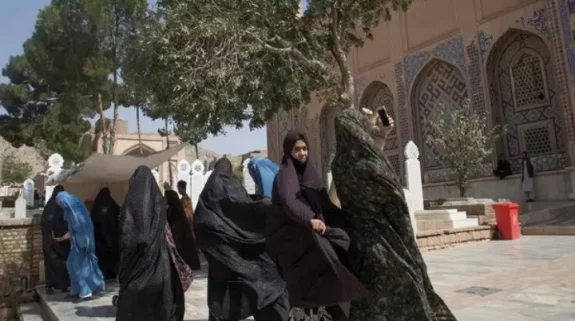It is believed that close to a quarter of all species on the planet are in danger of becoming extinct in the next few decades.
Keeping their importance on earth, the World Wildlife Day (WWD) is celebrated on March 3—the date that the Convention on International trade in Endangered Species of Wild Fauna and Flora (CITES) was adopted in 1973.
The goal of WWD is to celebrate the many beautiful and varied forms of wild fauna and flora; recall the connections between wildlife and populations across the globe and raise awareness on the urgent need to fight against wildlife crime, which has wide-ranging economic, environmental and social impacts.
For 2021, the WWD theme is ‘Forests and Livelihoods: Sustaining People and Planet’.

(Photo: Mrityunjoy Kumar Jha)
The theme looks to shed light on the links between the state of our planet’s forests and woodlands and the preservation of the many livelihoods that depend on them, with much attention to the traditional knowledge of the communities who have managed forest ecosystems and its wildlife for centuries. Between 200 and 350 million people live within or adjacent to forested areas around the world, relying on the various ecosystem services provided by forest and forest species for their livelihoods and to cover their most basic needs, including food, shelter, energy and medicines.
India is a country with tremendous biological and cultural diversity. It has 10 biogeographic zones representing different ecosystems as well as 91 eco-cultural zones, inhabited by more than 4,500 communities. For such communities, forests are an integral part of their life with important and irreplaceable social and cultural values. These communities understand the forests’ functioning, life forms, and ecological roles very well.
India’s biodiversity conservation methods have been commendable. It is also a signatory to almost all the biodiversity conventions. The country is a member of the United Nations Forum for Climate Change and is practically doing a lot to conserve biological diversity.
Seventy per cent of the global tiger population, 70 per cent of Asiatic lions and more than 60 per cent of the leopard population in India is a certificate of India's thriving biodiversity, as these big cats sit at the top of the food chain and their growing numbers shows the wellbeing of the whole ecosystem.
India, home to four biodiversity hotspots and a variety of ecosystems and terrains, including mountains, rainforests, coasts, plains and deserts, has about 7.6 per cent of the world’s mammals, 14.7 per cent of all amphibians, 6 per cent of birds, 6.2 per cent of reptiles, and 6 per cent of flowering plant species.
India has seen a few conservation successes lately. The population of leopards, tigers and lions fell sharply in the 20th century, but is now seeing a recovery. India’s tiger population has doubled in the past 12 years. The development of the tourism industry around wildlife has also helped the cause. Like tigers, India has seen success in many other species. The Gir forest in Gujarat is home to the only surviving population of Asiatic lions in the world. In the late 1960s, there were only about 180 Asiatic lions. As of 2020, there are more than 670.
Prime Minister Narendra Modi has been underlining that India’s commitment to wildlife protection and conservation is strong. “Wildlife conservation is ingrained in our ethos and has always been an integral part of our tradition and culture. Our holy Constitution also enshrines this philosophy by including conservation of forest and wildlife as one of the fundamental duties of every Indian.”
He said that with a robust and wide network of protected areas, the country’s commitment to words wildlife protection is as strong as ever. “Eco-sensitive zones provide peripheral support and act as a buffer around national parks and sanctuaries. Taking great strides in this direction, several such zones have been notified to enhance the space availability for thriving wildlife,” Modi said.
Encouraged by the success stories of Project Tiger and Project Elephant, India is making efforts to conserve other endangered species through Project Snow leopard, Project One Horned Project Rhino, Project Sea turtle, Project Gharial and Crocodile, Project Hangal, Project one horn Rhino, Project Lion and Project Dolphin.
The Indian government has come out with a 10-year plan to protect birds and conserve their habitats. At least 1,317 bird species have been recorded in India against around 10,000 species found worldwide. Of the 1,317 species recorded in India, 72 are endemic to the country. According to an assessment of the International Union for Conservation of Nature (IUCN) 2018, a total of 100 species of Indian birds are classified as ‘threatened’. Of these, 17 are categorised as ‘critically endangered’, 20 as ‘endangered’, and 63 as ‘vulnerable’.
Besides these threatened species, there are several other species that are marked by sparse population size and restricted range and are generally considered rare by conservationists. The draft plan observes that it is documented that 270 species (21 percent) of Indian avifauna fall under the ‘rare’ category and these include the raptors, pheasants, bustards, hornbills, cranes, storks etc. which together are classified as Rare, Endangered and Threatened (RET) bird species.
World Wildlife Day is an opportunity to celebrate the many beautiful and varied forms of wild fauna and flora and to raise awareness of the multitude of benefits that conservation provides to people. At the same time, the Day reminds us of the urgent need to step up the fight against wildlife crime, which has wide-ranging economic, environmental and social impacts.




















